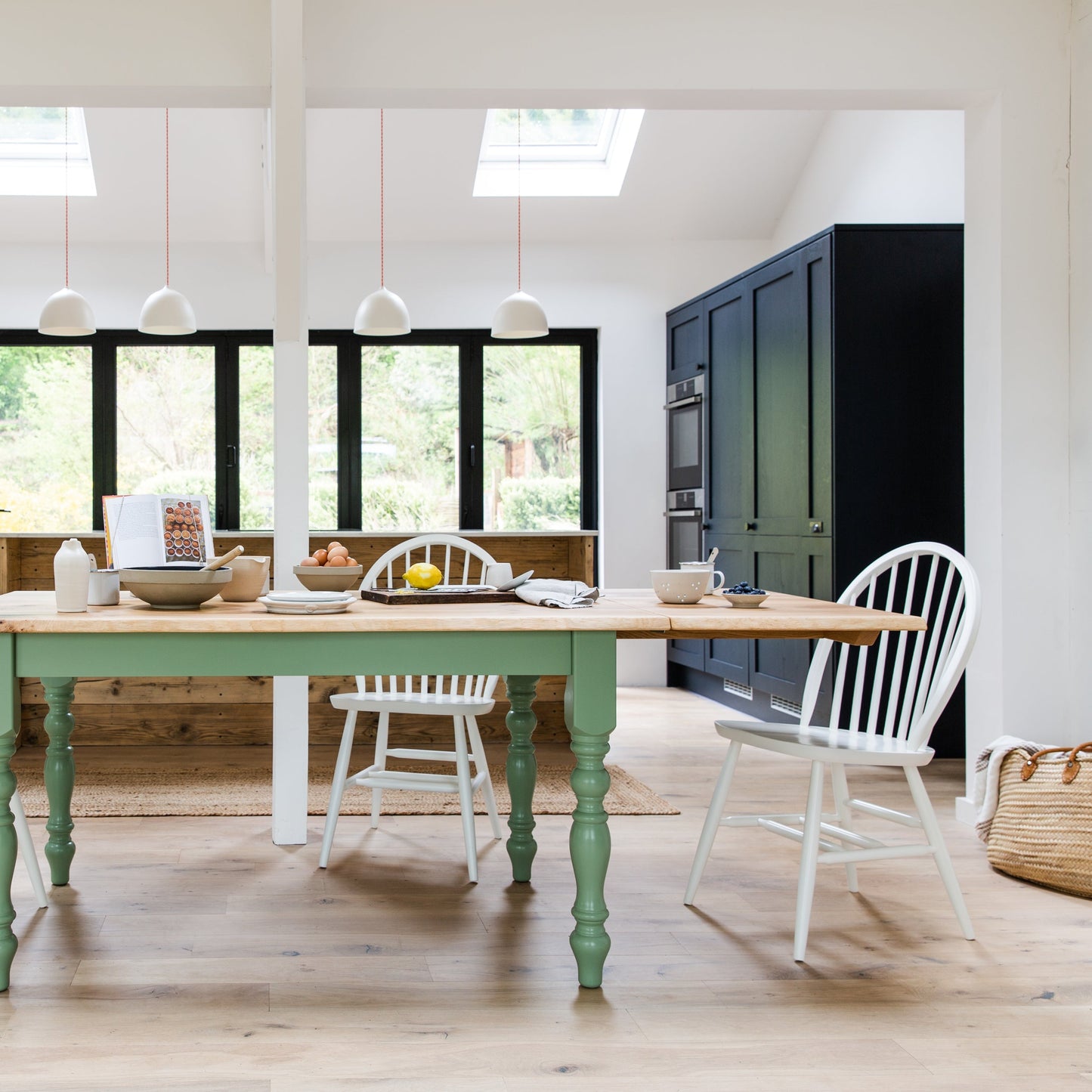
As the summer gets into full swing there are plenty of things to do in the garden! Here are a few tips from professional garden designer, Sally Watts.
Trees and Shrubs
Trained fruit trees require cutting back of any side shoots to about 7 cm long and remove growths that spoil the shape of fans & espaliers. If the tree has reached the limits of its space, then prune the end of each stem to 2-3 buds of the current year's growth. If you want to it to grow bigger, then leave this pruning until winter when you cut each stem back by a third.
Thin out overcrowded apples, pears and plum. Done now, this means you will get larger and better quality fruit. A good guide is to imagine a branch covered in fully ripe fruit that don't quite touch one another. So leave more space for apples than for plums. The weight on overladen branches - especially the plum family - can snap the branch. You can also use V-shaped sticks to prop the branches up.
Birds love to eat fruit just as it is ripening. Try to protect susceptible fruits such as cherries, plums, gages, peaches and nectarines with fine mesh netting or even horticultural fleece. Keep watering fruit trees, especially if they are newly planted.
Prune stone fruit trees such as plum, cherry and damson as soon as you can after harvesting. The cuts heal rapidly in warm weather, reducing the risk of silver leaf infection.
Now is a good time to prune early summer flowering shrubs such as Weigela and Philadelphus, once they have finished flowering to improve next years display. Cut out dead and broken branches and others back to strong new growth.
Prune deciduous magnolias if necessary.
Trim back bay trees, box plants trained in spires or other topiary shapes.
Continue to keep rhododendrons and camellias watered during dry weather and feed with ericaceous plant food.
Hedging
Conifer hedges need keeping under control - especially if you are growing one of the more vigorous varieties like Leylandii - to ensure that you keep the hedge green and to the size that suits your garden. Even before the conifers reach the size you wish to attain, try to trim the trees all over so that you sustain good, leafy growth over all the surfaces of the hedge.
Climbers
Summer prune Wisteria this month and next, to control its size and prevent it getting into guttering and windows. It also encourages it to form flower buds rather than green growth. Shorten long whippy current- season growth to five or six leaves from the main branch.
On new plants, tie in the new long whippy shoots on to trellis or stout wires.
Clematis -especially those grown in containers or against sunny walls, need watering during summer to limit stress and help prevent against powdery mildew infection.
Roses
Dead head repeat flowering roses regularly to encourage more flowers and make the plant neater. They will benefit from a rose feed after the main flush of flowers. Roses that flower once, leave them un-pruned if you want colourful rose hips.
Herbaceous Perennials
Plants such as hardy geraniums, Astrantias and Alchemilla Mollis that have already flowered or flopped and now look exhausted, can be chopped to the base with no ill effect. Delphiniums and Lupins can also be treated in this way. Apply a liquid fertiliser such as a seaweed based Maxicrop and soon this will encourage fresh new foliage and a second flowering. This is known as the “Hampton Hack” as it coincides with Hampton Court Flower show, as opposed to the “Chelsea Chop” with the Chelsea Flower Show.
The beginning of the month (ideally six weeks after they have finished flowering), is the best time to lift and divide overcrowded bearded Iris that have become congested or lost vitality. Divide rhizomes and replant only the younger outer sections and discard those that don’t have a fan of leaves or are withered. Dig a hole for each rhizome, trim back the fan of leaves to six inches to prevent wind rock and shorten the roots. Replant in a sunny position with the rhizome set at ground level. Water in well to help the roots establish and whenever the weather is hot and dry for the divisions to successfully re- establish.
Lawns
Remember in hot weather to raise the blades on your mower so you leave the grass longer. It needs less water that way.
All lawns look better for being edged. It makes such a difference and really justifies the effort.
Pests
Check containers for vine weevil grubs, the “C” shaped creamy fat larvae can be a serious pest. Sudden wilting of plants is a sign. Try treating with parasitic nematodes or other various chemical and biological controls available.
Ponds
Thin out vigorous oxygenating plants from ponds, leaving them on the side to allow aquatic creatures back into the water.
Miscellaneous
Keep bedding plants, containers and hanging baskets well watered and feed them weekly with a high potassium liquid fertiliser for an impressive display.
For late summer interest, now is the time to plant bulbs such as autumn crocus, colchicums and nerine lilies.
Sally Watts is a Professional Garden Designer who has been featured in national magazines for her fabulous work on plots throughout the country. For more tips and inspiration go to her website: sallywattsgardendesign.co.uk

